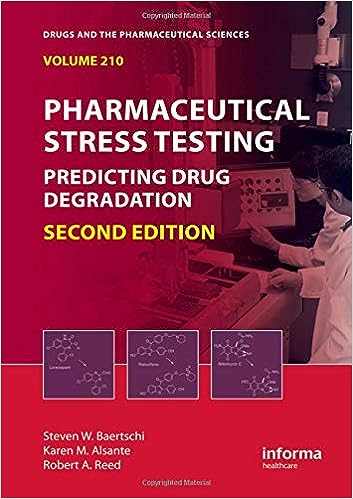Key Considerations for Biologics Stability Testing Under EMA Guidelines
Introduction
Biologics, including monoclonal antibodies, recombinant proteins, and vaccines, require meticulous stability testing to ensure their safety, efficacy, and quality throughout their shelf life. The European Medicines Agency (EMA) has established comprehensive guidelines to address the unique challenges associated with biologics stability testing. This article provides expert insights into EMA guidelines for biologics stability testing, highlighting critical considerations, challenges, and strategies for compliance.
Understanding EMA Stability Testing Guidelines for Biologics
EMA stability guidelines are aligned with global standards, including ICH Q5C, which focuses on the stability testing of biotechnological and biological products. Key objectives include:
- Ensuring Product Quality: Demonstrating that biologics maintain their intended properties under specified storage conditions.
- Supporting Shelf Life Claims: Generating data to establish appropriate shelf life and storage conditions.
- Facilitating Regulatory Compliance: Providing stability data to support Marketing Authorization Applications (MAAs) in the European Union.
Key Considerations for EMA Biologics Stability Testing
1. Defining Critical Quality Attributes (CQAs)
Biologics are complex molecules with specific attributes that must be monitored during stability testing. Key CQAs include:
- Potency: Biological activity over time.
- Structural Integrity: Monitoring aggregation, fragmentation, and denaturation.
- Purity: Assessing the presence of impurities and degradation products.
Tip: Use advanced analytical techniques such as mass spectrometry and high-performance liquid chromatography (HPLC) to evaluate CQAs.
2. Storage Conditions
EMA guidelines require stability testing under conditions that reflect real-world storage and distribution environments:
- Long-Term Studies: Typically conducted at 5°C ± 3°C for refrigerated products.
- Accelerated Studies: Conducted at 25°C ± 2°C / 60% RH ± 5% RH to simulate storage over a shorter timeframe.
- Stress Testing: Evaluates the product’s stability under extreme conditions, such as freezing, heat, or light exposure.
Tip: Include stability studies at intermediate temperatures if the product is sensitive to storage deviations.
3. Freeze-Thaw Stability
Many biologics are sensitive to freeze-thaw cycles, which can cause aggregation and loss of potency. EMA guidelines recommend:
- Conducting studies to simulate real-world handling, such as transportation or patient use.
- Monitoring critical quality attributes after multiple freeze-thaw cycles.
Example: Freeze-thaw studies for monoclonal antibodies ensure that repeated freezing and thawing do not compromise efficacy.
4. Packaging and Container-Closure Systems
The interaction between biologics and their packaging is a critical aspect of stability testing. EMA guidelines require:
- Material Compatibility: Evaluating leachables and extractables from container-closure systems.
- Integrity Testing: Ensuring airtight seals to prevent contamination and degradation.
Tip: Conduct stability testing with the final packaging configuration to validate its protective capabilities.
5. Photostability Testing
EMA guidelines, in line with ICH Q1B, emphasize the importance of photostability testing for light-sensitive biologics:
- Expose samples to simulated daylight and UV light to assess degradation.
- Evaluate changes in potency, appearance, and degradation products.
Tip: Use opaque or UV-resistant packaging for biologics prone to photodegradation.
Challenges in Biologics Stability Testing Under EMA Guidelines
Stability testing for biologics presents several unique challenges:
- Analytical Complexity: Biologics require advanced analytical methods to monitor CQAs accurately.
- Sensitivity to Environmental Conditions: Small deviations in temperature or pH can significantly impact stability.
- Data Management: Handling large datasets for long-term, accelerated, and stress studies requires robust systems.
Tip: Leverage automated data management tools to streamline stability data collection and analysis.
Best Practices for Compliance with EMA Guidelines
To ensure compliance with EMA guidelines, manufacturers should adopt the following best practices:
- Plan Early: Integrate stability studies into the early stages of product development to identify potential risks.
- Validate Methods: Use validated analytical techniques to ensure reproducibility and reliability of stability data.
- Optimize Packaging: Select materials that provide maximum protection against environmental stressors.
- Engage Regulators: Collaborate with EMA representatives to address specific stability testing requirements.
- Monitor Post-Approval Stability: Implement ongoing studies to ensure product quality after market entry.
Emerging Trends in EMA Biologics Stability Testing
Advancements in science and technology are influencing EMA stability testing practices. Key trends include:
- Digital Transformation: Electronic systems and AI-driven tools enhance data integrity and predictive modeling.
- Sustainability: Increasing adoption of eco-friendly packaging and energy-efficient stability chambers.
- Personalized Therapies: Tailored stability protocols for cell and gene therapies to ensure viability and potency.
Future Outlook: EMA is likely to incorporate these innovations into updated stability guidelines, reflecting the evolving needs of the biologics sector.
Impact of EMA Guidelines on Biologics Development
EMA stability testing guidelines play a pivotal role in the development and regulatory approval of biologics by:
- Ensuring Quality: Rigorous testing ensures biologics remain safe and effective throughout their shelf life.
- Streamlining Approvals: Clear guidelines facilitate smooth regulatory submissions and faster market entry.
- Promoting Innovation: Encouraging the development of advanced analytical methods and protective packaging solutions.
Conclusion
EMA guidelines for biologics stability testing provide a robust framework for ensuring the quality and safety of these complex products. By adhering to these guidelines, leveraging advanced technologies, and adopting best practices, manufacturers can navigate the challenges of stability testing, achieve regulatory compliance, and deliver innovative biologics to patients. As the industry evolves, EMA’s commitment to science-driven regulations will continue to support the development of cutting-edge therapies.

